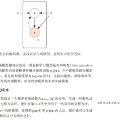Parametric computer-aided design (CAD) tools are the predominant way that engineers specify physical structures, from bicycle pedals to airplanes to printed circuit boards. The key characteristic of parametric CAD is that design intent is encoded not only via geometric primitives, but also by parameterized constraints between the elements. This relational specification can be viewed as the construction of a constraint program, allowing edits to coherently propagate to other parts of the design. Machine learning offers the intriguing possibility of accelerating the design process via generative modeling of these structures, enabling new tools such as autocompletion, constraint inference, and conditional synthesis. In this work, we present such an approach to generative modeling of parametric CAD sketches, which constitute the basic computational building blocks of modern mechanical design. Our model, trained on real-world designs from the SketchGraphs dataset, autoregressively synthesizes sketches as sequences of primitives, with initial coordinates, and constraints that reference back to the sampled primitives. As samples from the model match the constraint graph representation used in standard CAD software, they may be directly imported, solved, and edited according to downstream design tasks. In addition, we condition the model on various contexts, including partial sketches (primers) and images of hand-drawn sketches. Evaluation of the proposed approach demonstrates its ability to synthesize realistic CAD sketches and its potential to aid the mechanical design workflow.
翻译:计算机辅助设计(CAD)工具是工程师指定物理结构的主要方法,从自行车踏板到飞机,到印刷电路板。参数 CAD的主要特征是设计意图不仅通过几何原始体编码,而且还通过元素之间的参数限制进行编码。这种关系规格可被视为构建一个制约程序,允许编辑一致地传播到设计的其他部分。机器学习提供了一种令人感兴趣的可能性,即通过这些结构的基因化模型加速设计过程,使新的工具,如自动完成、约束性推断和有条件合成。在这个工作中,我们展示了这种设计意图的基因化模型模型模型,这些模型构成现代机械设计的基本计算构件。我们的模型,从Scetchergraphs数据集中培训到一致传播到设计设计的其他部分。机器学习提供了原始序列的自我偏重合成,最初的坐标,以及参照抽样原始结构的制约。作为模型的样本,例如自动完成、约束性推断和有条件合成合成。在标准 CADAD草图模型中使用的制约性图表演示图示,我们直接进口了这些模型的下图状设计能力,包括手样设计中的一些设计。




























